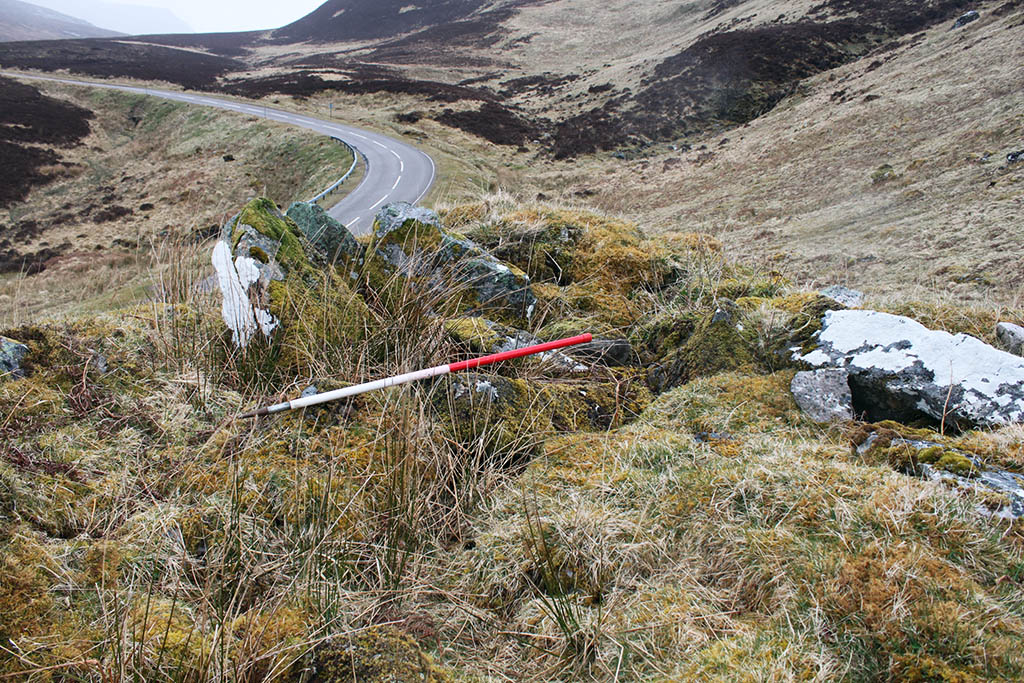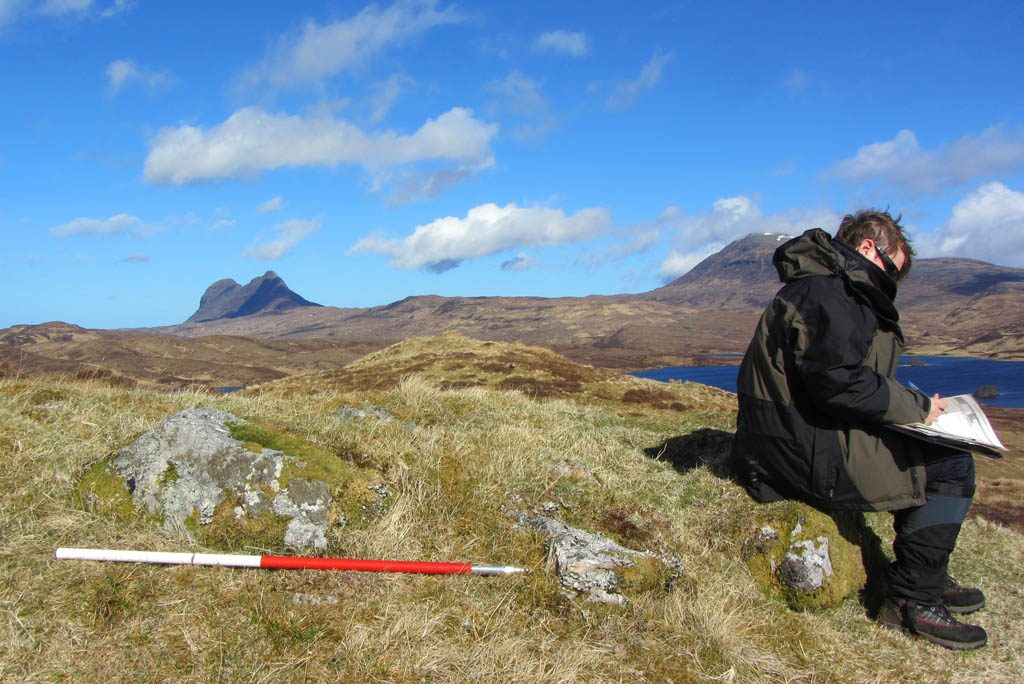Driving through time in Northwest Scotland
You’ve probably heard of the North Coast 500. But did you know natural routeways across our country have been exploited for thousands of years?
They form a focus for all sort of things, including:
- travel and exploration
- trading
- settlements
Among other activities, you can often see evidence of prehistoric and later burials along such trails. The popular North Coast 500, winding northwards from Ullapool, is a great example.

Road winding up from Ullapool, via PastMap
Paying respects to our ancestors
If you look carefully, the NC500 passes intriguing humps and bumps and the occasional protruding boulder. These tell us about the presence of a very special type of burial monument: a Neolithic chambered cairn, built about 5000 years ago.
These features can easily be confused with glacial deposits. It’s only when you get up close to these roughly circular, mounded monuments that you see glimpses of what lies within.
To work out which one you’re looking at, here are some of the features to keep an eye out for:
- An overlying cairn of small stones and boulders
- a passage
- chambers
- maybe a curved façade.
You can read more about the structure of these amazing cairns in our Canmore record.

The NC500 passes intriguing humps and bumps…
Cairns are tantalising windows into prehistory. Earlier in the year, our designations team visited over 40 in and around the natural routeways of Assynt, Glen Oykel and lands to the North of Ullapool.
Local Heroes
In the HES Designations team we work with individuals and communities across Scotland to help understand more about heritage. In this case, we were responding to a request from a local heritage society, Historic Assynt. They asked us to visit and consider giving these sites greater recognition and protection.
Scotland has been recognising the cultural significance of its ancient monuments since 1882 when the very first legislation was passed to help protect these sites.
‘Scheduled monuments’ (as they are known) are identified as being nationally important to Scotland. Currently, there are around 8000 of them. You can read more about these types of monuments here.

Historic Assynt asked us to visit and assess the historic significance of their local cairns
Do Your Research
Before visiting, our team carried out desk-based research. This involved looking at resources like maps, aerial imagery, archaeological evaluations and published articles and books relating to the sites.
Some of the sites were already protected as scheduled monuments but a site visit would allow the team to re-assess them and update records.
Our fieldwork was a great success. We’ll now sift through all the information to determine which sites should be recognised. We use a set of established criteria to determine national importance which you can find on our website.

Our fieldwork was a great success
Visiting the Past
Prehistoric monuments are found across the moorland and established woodlands of Northwest Scotland on public and private land. It’s always worth checking with the landowner first before you visit these sites – often there are cattle and sheep in the area or perhaps other hazards.
If you want to visit a prehistoric site like this, do your research first to make sure it’s safe and there are no access restrictions. Canmore has lots of information that can help. And please follow the Scottish Outdoor Access Code.
Would you like to propose a monument for scheduling, on behalf of yourself, a community or organisation? Find out how you can do this on our website.

